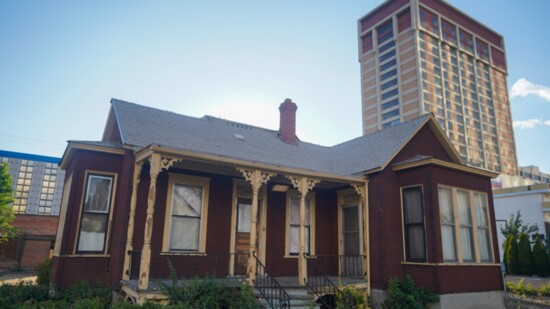Reno boasts a rich architectural history that mirrors its dynamic cultural evolution. From its origins as a small railroad town to its current status as a bustling city, Reno’s architecture reflects its history of growth, adaptation, and innovation. This month, we explore Reno's architectural journey through insights from local experts.
Reno’s architectural identity began taking shape with the arrival of the Central Pacific Railroad, which connected Sacramento to Utah and accelerated the city’s growth. Officially becoming a town on May 9, 1868, Reno’s early architecture featured wooden structures and “crude dwellings.” As the city developed, Victorian homes in styles such as Queen Anne, Italianate, and Gothic Revival started to emerge.
Kassandra Andicoechea-Schmaling, MA, a local historian and University of Nevada, Reno graduate, underscores the role of early water access in Reno’s development: “Much of Nevada’s history centers around water access, which is no different in Reno. The founding of Reno is attributed to a toll bridge established in 1859 by E.W. Fuller.” This bridge was crucial for transporting materials like mineral ore, which was essential for the area’s growth.
The 1930s marked a significant shift in Reno’s architecture, reflecting the city’s prosperity and the rise in fascination with Art Deco styles. During this period, Reno emerged as a hotspot for quick divorces, attracting wealthy individuals who commissioned luxurious buildings in this distinctive style.
Andicoechea-Schmaling notes, "With divorce and gambling tourism in the 1930s, we see a lot of Art Deco inspiration, especially evident in the original 1927 Reno Arch. However, with the divorce requirements at just a six-week residency, many tourists opted for long-term rentals, hotels, or dude ranch stays, resulting in many Art Deco style hotels and casinos."
Following World War II, Reno embraced mid-century modernism, characterized by sleek, minimalist designs that prioritized form and function. Many mid-century-style homes can still be found in the King’s Row neighborhood in Northwest Reno.
Jeff Frame, AIA, NCARB, Owner and Principal Architect of Frame Architecture, elaborates: "Mid-century modernism was about breaking away from traditional forms and exploring new materials and construction techniques. Reno’s architects were inspired by global movements and adapted them to the local context, creating buildings that were both innovative and harmonious with the surrounding landscape."
Recent decades have seen Reno blend historical architecture with contemporary innovations. A notable example is 347 West Street, a mid-1800s home recently sold for $1 by Jacobs Entertainment Inc. “We decided to preserve and move the home from the path of redevelopment. The parcel and adjacent land will be part of the redevelopment of the W. 4th Street corridor, now known as J Resort’s Reno Neon Line,” shared Christopher Mazanec, Director of Real Estate Developments at Jacobs Entertainment Inc. The project is set to relocate west of Reno, with a target completion at the end of the month.
Lake Mansion, another preserved building, has been moved twice and now serves as Arts for All Nevada, hosting public events. Additionally, community input has played a role in developments like the Reno Ice project. “The South Valleys Park master plan was updated to include an Aquatics Center and additional fields, balancing community desires with project feasibility,” shared Frame.
Efforts to adapt the reuse of historic sites have continued to be integrated into Reno’s development strategy, breathing new life into the city. For instance, today, you can still venture to local parks and businesses and find remnants of the historic Mapes Hotel, which was once the tallest building in Nevada when it opened in 1947. Furthermore, recent collaborative efforts between local architects, historians, real estate professionals, and residents have led to successful historical integration into urban planning. These projects not only enhance the city’s aesthetic appeal but also foster a sense of community and pride among Reno’s residents.
As Reno grows, it inevitably is set for further evolution. Emerging trends include sustainable design, mixed-use developments, and smart technologies. Architects and developers are increasingly focused on creating spaces that are aesthetically pleasing, environmentally responsible, and adaptable to changing needs.
Frame predicts, "Reno's architecture will continue to evolve with more sustainable solutions. Factors such as the economy, code requirements, client preference, and energy costs will push us toward more sustainable architecture. Innovations in workplace design are dominating our designs, with modern workspaces becoming more collaborative and pushing innovation."
To date, Reno’s architectural evolution reflects the city’s vibrant history and forward-thinking spirit. As Reno continues to grow, experts and community members like Andicoechea-Schmaling, Frame, and Mazanec are dedicated to shaping its future while honoring its architectural heritage. Their efforts, alongside community members like you, ensure that Reno’s architectural legacy will continue to inspire and captivate future generations.
